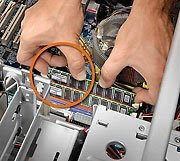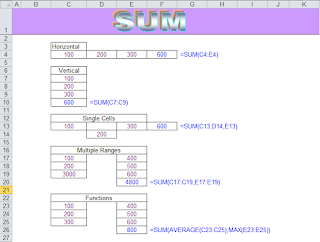How do I install RAM?

1. Unplug your PC and open its case. Position it so that you can comfortably reach into the case's interior. If you have a tower, you may find installing the RAM modules easier if you lay the case on its side. If you're upgrading the RAM on a notebook, look for an access panel on the bottom of the machine secured by one or two screws, and carefully remove that panel.
2. Protect your PC's delicate circuits from static electricity by properly grounding yourself. If you don't have a grounding strap, at least touch a metal faucet, pipe, or even your computer's case before touching the inside of your PC or any component.
3. Check your PC's documentation to identify the proper RAM sockets to fill. Remove any obstructions, such as power cables or plastic panels used to channel airflow over the motherboard.
4. If you need to remove an existing module, gently push down on the clips on either side of the RAM socket. The module will pop up slightly and should be easy to pull out.
5. Take the new RAM modules out of their static-free envelope and place them on top of the envelope. Always hold a RAM module by pinching the edges of the module; avoid touching the chips or circuitry on the face.
6. To install a module, open the latches at each end of the RAM socket by gently pushing them down. Line up the notch at the bottom of the memory stick with the corresponding bump in the memory socket. Touching the top edge of the module, gently push the piece down into the socket; the latches at either end should rise and lock. Gently press each latch toward the edge of the RAM module to confirm that it is completely closed.
Notebook users should face toward the bottom of the memory socket, taking care to line up the notch in the memory module with the key in its socket. Carefully push the top of the module downward until the clips pop into place to secure it.
7. Reassemble your PC, power it up, and watch the screen during boot-up to confirm that the system recognizes the new RAM. If it doesn't, try restarting the PC, entering the CMOS setup program, and checking whether the machine recognizes the new memory. (Do this by pressing the key indicated in the on-screen prompt, often F1 or Del.) If the new memory isn't recognized, exit the setup program, turn your system off and unplug it, open the case, and reseat the RAM modules.
